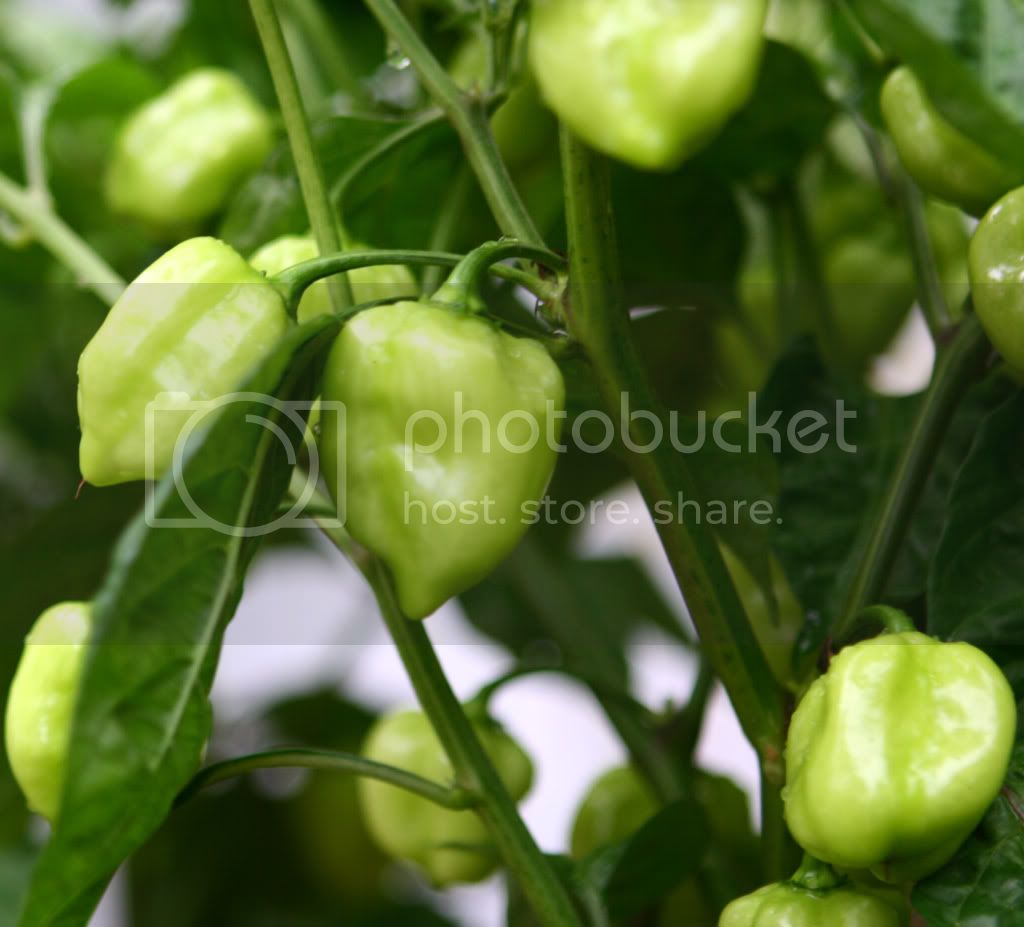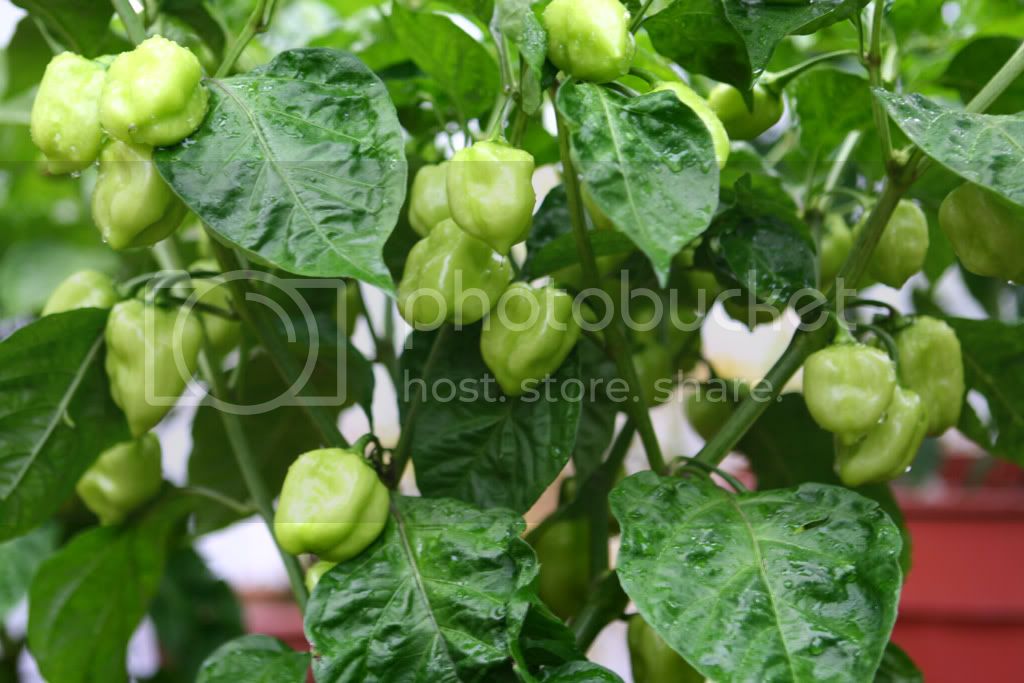-
Do you need help identifying a 🌶?
Is your plant suffering from an unknown issue? 🤧
Then ask in Identification and Diagnosis.
You are using an out of date browser. It may not display this or other websites correctly.
You should upgrade or use an alternative browser.
You should upgrade or use an alternative browser.
"Bhut Jolokia Ghost Pepper" - ID please
- Thread starter mo-mtnbkr
- Start date
AlabamaJack
eXtreme
seems like you got took...those do look very habish to me...sure as the dickens ain't Bhuts...
and welcome from Fort Worth by the way...
and welcome from Fort Worth by the way...
AlabamaJack
eXtreme
cool man...we enjoy being nice to one another here...
IMO...if you want real Bhuts...go to the source that had them certified in Guiness...
http://www.chilepepperinstitute.org/cart/seeds/other_varieties/
IMO...if you want real Bhuts...go to the source that had them certified in Guiness...
http://www.chilepepperinstitute.org/cart/seeds/other_varieties/
AlabamaJack
eXtreme
agree that Neil is great seed source
Yeah if you want just bhuts you can go to what AJ said. The chile pepper institute "NMSU"cool man...we enjoy being nice to one another here...
IMO...if you want real Bhuts...go to the source that had them certified in Guiness...
http://www.chilepepperinstitute.org/cart/seeds/other_varieties/
Yeah, look like Caribbean Reds or Red Savina.
My Savinas have the little tit on the end like most of your pods, while my Caribbean Reds generally have a more blunt end and slightly broader pod.
My Savinas have the little tit on the end like most of your pods, while my Caribbean Reds generally have a more blunt end and slightly broader pod.
Yeah, look like Caribbean Reds or Red Savina.
My Savinas have the little tit on the end like most of your pods, while my Caribbean Reds generally have a more blunt end and slightly broader pod.
Lots of places sell "Red Savinas" that are actually Caribbean Reds and not real Red Savinas. I have seen a field of Red Savinas from a farmer who is licensed to grow them and they are dark green when immature (like an orange habanero) and they are wrinkly. Even the website RedSavina.com sells "Seeds Red Habanero" which I am sure are Caribbean Red's which adds too the confusion even more.
Like this.

Skip to 0:47
Very cool. I sure know Jim from that video. I have a lot of familiarity with that field. 
Chris
Chris
Lots of places sell "Red Savinas" that are actually Caribbean Reds and not real Red Savinas. I have seen a field of Red Savinas from a farmer who is licensed to grow them and they are dark green when immature (like an orange habanero) and they are wrinkly. Even the website RedSavina.com sells "Seeds Red Habanero" which I am sure are Caribbean Red's which adds too the confusion even more.
Yeah, my Savina and Caribbean Red pods are very similar, but the CR pods are larger and the plants are a little different in their growth habit. In my grow log M = Savina and D = CR. The CRs came from Pepper Gal and I know of at least one other seed from her that isn't true. I'll have to check the unripe colors as I don't remember offhand.
I'm not too disappointed with my plants as CR has been my favorite hab. The plants are healthy and putting out ton's of fruit, so it should be a good year.
Lot's of good stuff to learn here. Think I'll hang around a while. Thanks all!
...well, if you are right there in St.Louis I could have dropped some off to you this past week (if i would have known) when we went through there.
We're doing work on the locks and dams along the Mississippi and currently in N. Iowa (started in Hannibal), so even if they are not completely dried, they can be there within 2 days by mail.
I'm harvesting about a pound a day from my jolokias right now, and saving the seeds from all the better looking ones for if/when we get a work project closer to home again... and i can resurrect my garden.
My original seed source was an orphanage in India back in mid-'06, and still have my first 8 plants producing the peppers i'm picking now.
I've got both yellows and the usual reds, so would be more than happy to drop some seeds in the mail to you if interested, send me your address by way of PM and i'll get them right over to you.
for the record, you're not the first person to be ripped off by seedrack.com.
at this point, it seems pretty malicious on their behalf to sell seed labeled bhut jolokia...
at this point, it seems pretty malicious on their behalf to sell seed labeled bhut jolokia...
Why are all unidentified "hab type" pods identified as "carribean reds" these days?
They are not. If they are not light green immature (a recessive trait), small and roundish while tapering off to a point (not too common for "Habanero" types) and have heart shaped leaves (not too common for C. Chinense) then one tends to think of the one pepper that looks like that... What could it be? Oh yes, a Caribbean Red. And since most people who identify them as Caribbean Reds are also probably growing them or have grown them at some time.
Seriously, how many peppers have you seen that look like a Caribbean Red? Not too many I'd bet.
If he had showed a picture of some unknown dark green pod and or wrinkles and or elongated, I don't think anyone would have said Caribbean Red. Why? Because it doesn't look like it.
Here is a better question I think... Why do most people who grow "Red Savina" have something that looks exactly like a Caribbean Red? Which IMO is a pretty unique looking pepper.
I have a feeling I know the answer, they are Red Habaneros (that helps) they are quite hot (that also helps some) and real Red Savina seeds are very hard to come by (seeing as you legally need a license to grow them commercially) but regardless people have been selling or trading seeds claiming to be "Red Savina's" even RedSavina.com which admits they are not real Red Savina seeds. It's only natural that people will be growing both of these varieties thinking they are different when they unknowingly have the same variety, a Caribbean Red or some other Red Habanero type.
Add to that the fact that most people don't really know the physical differences between the two plants and you get lots of confusion. I have seen people's Webshots and Flicker albums proudly displaying what they claimed to be "Red Savinas" and even "Bhut Jolokias", and they were all smallish, round, tapered and light green immature pods that ripened to dark red and had heart shaped leaves. Of course you probably have seen people growing the cayenne type pods that were supposed to be Bhut Jolokias, another example of one plant being sold or traded as another.
I think it's pretty clear, there are lots of people growing "Caribbean Reds" and they don't even know it. Add to it that they are a very popular variety in the first place and produce a ton of peppers with a unique flavor with almost twice the heat of a typical habanero and you can see why so many people are growing them.



 my friend from Ontario
my friend from Ontario